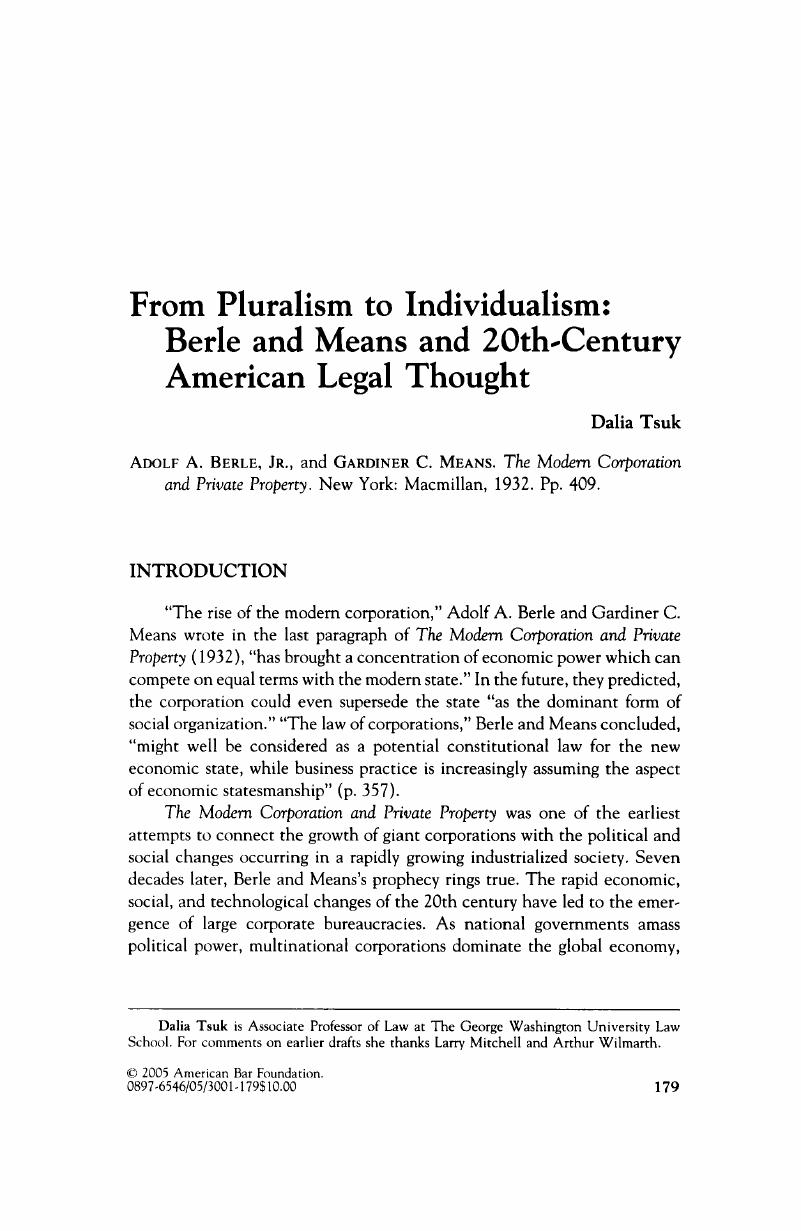Crossref Citations
This article has been cited by the following publications. This list is generated based on data provided by Crossref.
Zumbansen, Peer
2009.
The Next 'Great Transformation' of Markets and States in the Transnational Space: Global Assemblages of Corporate Governance & Financial Market Regulation.
SSRN Electronic Journal,
Mitchell, Lawrence E.
2010.
Perspectives on Corporate Governance.
p.
17.
Hicks, Darrin
and
Dunn, Mathew
2010.
SPIRITS IN THE NIGHT.
Cultural Studies,
Vol. 24,
Issue. 3,
p.
356.
Pichhadze, Aviv
2010.
Private Equity, Ownership, and Regulation.
The Journal of Private Equity,
Vol. 14,
Issue. 1,
p.
17.
Pichhadze, Aviv
2011.
Ownership, Governance and US Securities Regulation: The Case for a 'Learning Regulator'.
SSRN Electronic Journal,
Diamond, Stephen F.
2011.
The Embedded Firm.
p.
151.
Mitchell, Dalia Tsuk
2011.
The Embedded Firm.
p.
60.
Moore, Marc T.
and
Rebérioux, Antoine
2011.
Revitalizing the institutional roots of Anglo-American corporate governance.
Economy and Society,
Vol. 40,
Issue. 1,
p.
84.
Barkan, Joshua
2012.
The Wiley‐Blackwell Companion to Economic Geography.
p.
472.
CIEPLEY, DAVID
2013.
Beyond Public and Private: Toward a Political Theory of the Corporation.
American Political Science Review,
Vol. 107,
Issue. 1,
p.
139.
Levy, Jonathan
2014.
Accounting for Profit and the History of Capital.
Critical Historical Studies,
Vol. 1,
Issue. 2,
p.
171.
Zumbansen, Peer
2016.
Reshaping Markets.
p.
60.
Hillon, Yue Cai
Kisiel, Geraldine
and
Hillon, Mark E
2017.
A discursive framework for research in management consulting.
Recherches en Sciences de Gestion,
Vol. N° 117,
Issue. 6,
p.
109.
Ripken, Susanna Kim
2019.
Corporate Personhood.
Tennent, Kevin D.
2020.
The Palgrave Handbook of Management History.
p.
781.
Tennent, Kevin D.
2020.
The Palgrave Handbook of Management History.
p.
1.
Hussain, Muzzammil
Abid, Fareeha
Ambreen, Syeda
Usman, Ahmad
and
Rahman, Atteeq ur
2022.
The role of institutional ownership structures on corporate performance.
Journal of Public Affairs,
Vol. 22,
Issue. 1,
Smith, Andrew
Tennent, Kevin
and
Russell, Jason
2022.
The rejection of industrial democracy by Berle and Means and the emergence of the ideology of managerialism.
Economic and Industrial Democracy,
Vol. 43,
Issue. 1,
p.
98.
Kim, Eric J.
Ganga, Arjun
and
Kim, Leo A.
2023.
The forgotten protection factor: A nationwide score-based assessment of motorcycle eye protection legislation.
Journal of Safety Research,
Vol. 87,
Issue. ,
p.
407.
Wang, Jiguang
and
Hu, Yushang
2024.
Corporate governance in Ming & Qing China: evidence from Shanxi (Jin) merchants.
Journal of Chinese Economic and Business Studies,
Vol. 22,
Issue. 1,
p.
87.



